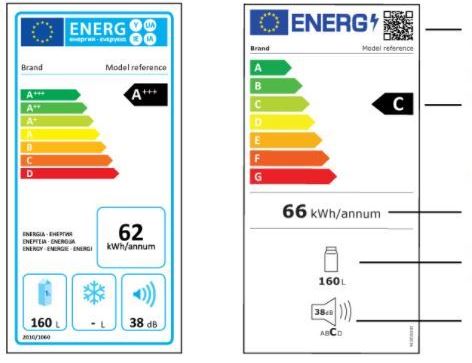Kategori : ELECTRICITY ENERGY NEWS, ENERGY AGENDA NEWS, ENERGY EFFICIENCY NEWS - Tarih : 03 March 2021
As of 1 March, consumers will find new, revamped labels on dishwashers, washing machines, fridges and televisions. But to reach our climate ambitions, the European Commission must introduce A-G dedicated energy labels for all products responsible for high energy consumption, write Mélissa Zill and Jean-Pierre Schweitzer.
Mélissa Zill is the programme manager at ECOS. Jean-Pierre Schweitzer is a policy officer at the European Environmental Bureau (EEB). Together, ECOS and the EEB lead the Coolproducts  campaign – a coalition of NGOs working to ensure better products for consumers and the planet.
campaign – a coalition of NGOs working to ensure better products for consumers and the planet.
Energy labels are a great ally in our quest to reducing emissions – they have encouraged consumers to buy more efficient products for more than 20 years, helping each European family save up to €285 per year. Today, 14 product categories have energy labels, including most home appliances (such as washing machines or dishwashers), lamps, air conditioners and boilers.
As of 1 March, consumers will find new, revamped labels mainly on four product types: dishwashers, washing machines, fridges and televisions. Lamps will also get new energy labels on 1 September. This is good news for both consumers and the environment, but more work is needed if we are serious about reaching our climate objectives.
What’s new in our energy labels?
The revamped labels are simplified, switching back to the A-G scale and eliminating the A+, A++, A+++ classes. Why? As products grew more energy-efficient, classes above A (the ‘pluses’) were introduced, while the lowest classes (E, F, G) were left empty. The new labels will regularise this, and so will not be directly comparable with their previous versions. A fridge labelled as A+++ today may become a C-class product.
In fact, we will not see many A-labelled appliances in the next few years: the ‘A class’ is designed to remain empty for a while, as an incentive to innovation. In addition, efficiency limits behind each class will be revised on a regular basis.
One more detail many might notice is the addition of a QR code to the labels. Scanning the code leads to entries in the EPREL database, where additional product information is made available by manufacturers.
Not only new labels – measures, too
Along with the revised labels, the EU is introducing new ecodesign measures for eleven product categories, specifying minimum requirements for energy consumption, ensuring that the worst-performing models can no longer be sold in the EU.
The revised energy labels and new ecodesign measures are expected to jointly deliver 167 TWh of energy savings every year by 2030, as much as the final annual energy consumption of Denmark.
The new measures will not only help cut our electricity bills. They also include ground-breaking requirements to make appliances easier to repair too. For example, manufacturers of washing machines and fridges will now be obliged to provide professional repairers with key spare parts for 10 years and, more importantly still, design repairability in, for instance by ensuring easier disassembly of their products.
New labels, more labels, better labels – now
New energy labels on a number of electrical goods as of 1 March will save us millions of euros – good for our pockets, and cut millions of tonnes of CO2 emissions – good for the planet. But to reach our climate ambitions, the European Commission must now move up a gear and introduce A-G dedicated energy labels for all products responsible for high energy consumption.
In addition, labels should include more information: consumers have the right to easily access repairability and durability scores for the products they buy and there is no better place for this information than the tool they already know and appreciate – the energy label. Only this way will we empower them to choose truly efficient new appliances.
Time to make sure people make the right choices – for themselves, and for the planet. The energy transition starts at home.
Source: Euractiv





